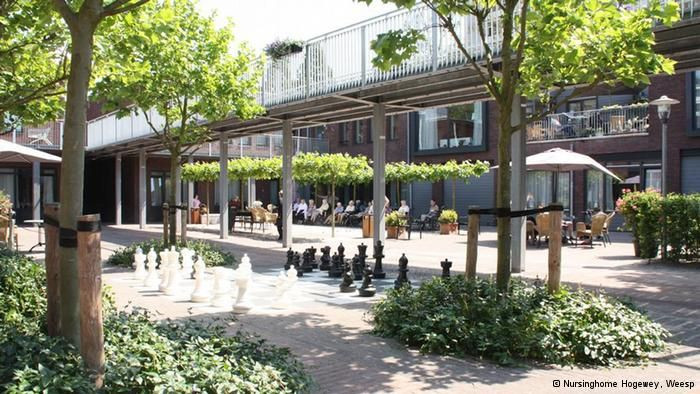Residents Of 'Dementia Village' Unaware They're In A Nursing Home; Could The Model Improve Care?

Dementia and Alzheimer's patients wandering away from nursing homes and caregivers frequently mobilize extensive search efforts, in the U.S. and around the world. Confusion and memory loss can render elderly patients completely oblivious to the fact that they are receiving care, and sometimes, they simply leave, believing themselves to be in a completely different place and time.
The growing problem has many concerned about the sustainability of current therapeutic measures. However, restricting access or egress may turn nursing homes into prison-like facilities.
But what if the patients have no idea that they can't leave?
Dementia Village: An Alternate Reality?
Hogewey, or "Dementia Village" as it has come to be known, offers a new kind of treatment for elderly dementia patients. The concept behind the Dutch nursing complex may sound more like a postmodern movie trope: 152 dementia patients, living together in a small hamlet where the grocery store, restaurant, hair salon, and theater are all staffed by caretakers.
Their two-story housing units are arranged to form a perimeter wall around the village, so that patients wandering around won't accidentally leave.
The single exit door is attended by a polite staffer, who kindly informs those who approach it that it is locked, and that they should consider a different route instead.
Most live a normal life, with normal activities and regular get-togethers with friends around the village. Few have any idea that they are, in fact, in a nursing home.
"Dementia Village Does Not Dupe Residents"
Although the whole situation approaches the menacing hyperreality probed by philosophers like Jean Baudrillard and movies like The Truman Show, the owners of the complex do not believe that they are fooling the residents.
"We have a real society here," Yvonne van Amerongen told CNN. "I don't think people feel fooled. They feel fooled if we just tell them a story that's not true and they know it. We're not telling stories."
Instead, the Dementia Village is intended to return to patients a life they would otherwise lose sight of forever. The idea came to Van Amerongen after the death of her father.
"It was the moment my mother called me and told me my father had passed away suddenly," she recalls. "Nothing was wrong with him. He just had a heart attack and he died. One of the first things I thought was, 'Thank God he never had to be in a nursing home.'"
A Model For Improved Dementia Care in the U.S.?
Around the world, health officials are beginning to notice the curious model and undeniable success of the Dementia Village. Van Amerongen believes that Hogewey's concept could help dementia patients everywhere, provided that caretakers never lose sight of its core values.
"[At Hogewey] we have Dutch design, Dutch cultures, Dutch lifestyles, but the concept is to value the person, the individual... to support them to live their life as usual, and you can do that anywhere."
Perhaps we'll see similar "alternate realities" in the U.S. soon?
According to The National Institute of Health (NIH), dementia is caused by a variety of health issues, and memory loss is only one of the many ways in which the debilitating condition manifests. Other signs of dementia include impaired problem-solving abilities, failure to control emotions, and general personality changes. As dementia becomes more advanced, people lose their ability to communicate and eat, and could lead to their death. Alzheimer's disease, which usually considered the most common cause of dementia, currently affects over 5 million Americans, and it is estimated that 25 to 50 percent people aged 85 or older exhibit nascent signs of the disease.



























